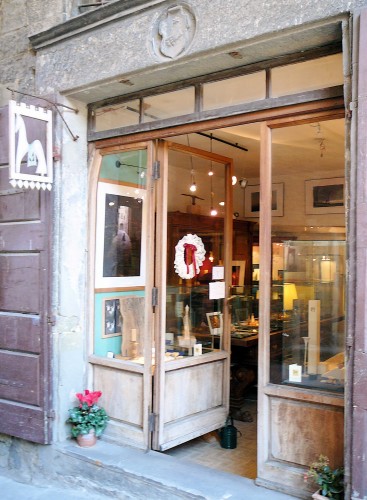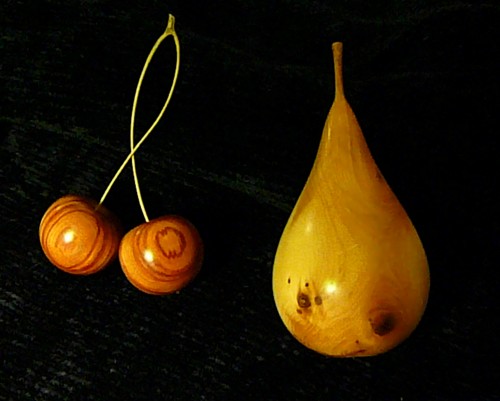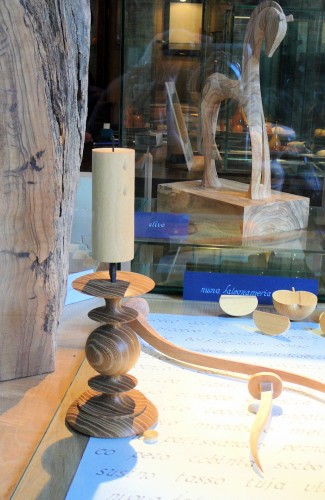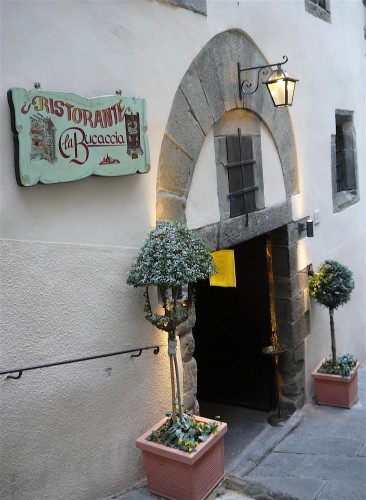Fifteen years ago on my second visit to Italy, I went to Cortona. Why? To have tea with Frances Mayes, of course. I planned to spend the following year under the Tuscan sun – a sabbatical from my law firm life. Who else would be the best source of info?
We did not sip tea under the shady arbor of grapevines, near the fragrant lavender patch, behind the golden and peach-colored walls of the restored Bramasole villa. No, we sat in the back of the Caffe Bar Signorelli in the main square of Cortona for two hours over countless cups of ever-weaker tea. I can’t remember what I learned about how to have an exceptional extended vacation in Italy, but I remember the author was charming and was a major proponent of buying a second home in Tuscany.

On the same visit to Cortona, I also met Umberto Rossi. Some would call him a falegname – a craftsman of wood – although the better term would be artisan. Umberto is a master craftsman in “turned” wooden objects, using a lathe to make the thinnest possible wood bowl or objet d’art. But it was the fruit he created that caught my eye – apples of acacia or palisander wood, pears of tulipwood, and two cherries of cherry wood, joined by stems of lemonwood, no thicker than the real thing.

I met Umberto in his small shop on the same square where I had tea with Frances. After a long discourse on how each item was made and the decisions that go into choosing the wood, the preparation, the tools and the amount of skill and labor that go into each item, I bought three pieces.
Umberto said he couldn’t understand why someone would buy a piece of his work and not ask about the type of wood or how it was made. That wasn’t a problem with me. I wanted to know about all of it. I had never seen such intricate craftsmanship with such an eye to detail outside of a museum. He invited me to visit his workshop just down the hill on Via Guelfa. My memory of this place is that it was crowded, dark, cold, and full of sawdust and pieces of wood, as well as all of the equipment needed for his work – but it was a long time ago, I may have the details wrong. It was there, looking at rough chunks of chestnut and olive wood, small logs of mahogany and rosewood, and even a cube of ebony, that the philosophy attributed to Michelangelo came to mind – Umberto seemed to look at a piece of wood and envision the form contained inside and it was his mission to bring it to life.

Then, Umberto invited me home to meet his wife, Dee, who, like Frances Mayes, was from the American South. Maybe it was that southern hospitality, but Dee kindly interrupted her dinner preparations to make coffee for the tourist her husband brought home with no warning. I never did learn how Dee Morton, an artist from Georgia ended up in a cozy apartment in a soon-to-become-famous, but now a definitely obscure, rocky hill town on the edge of Tuscany, with woodworker Umberto Rossi. Besides cooking dinner and making coffee, she was wrangling two kids, the youngest just one year old – it didn’t leave a lot of time for personal histories.

Last week, I went back to Cortona. Frances Mayes has since moved to North Carolina. Umberto’s shop was closed tight by ancient faded green wooden doors – no way to peer in, no big sign to say it was still his shop – but there was a small card taped to the door that gave a phone number and directions to the workshop. “Open on request.” As I debated the issue, a woman arrived wearing a warm coat and jaunty beret. It was Dee Morton.

The shop is now a showroom – same size, but with elegant glass cases. Umberto’s exquisite work remains the focus, but now also there are Dee’s drawings and paintings on the walls and the artwork of their talented now-teenaged children on display.

I, of course, added to my collection. Then we went off to one of the best restaurants in Cortona, La Bucaccia, (Via Ghibellina, 17), for a lunch full of local specialties, but that’ s for a later post …
